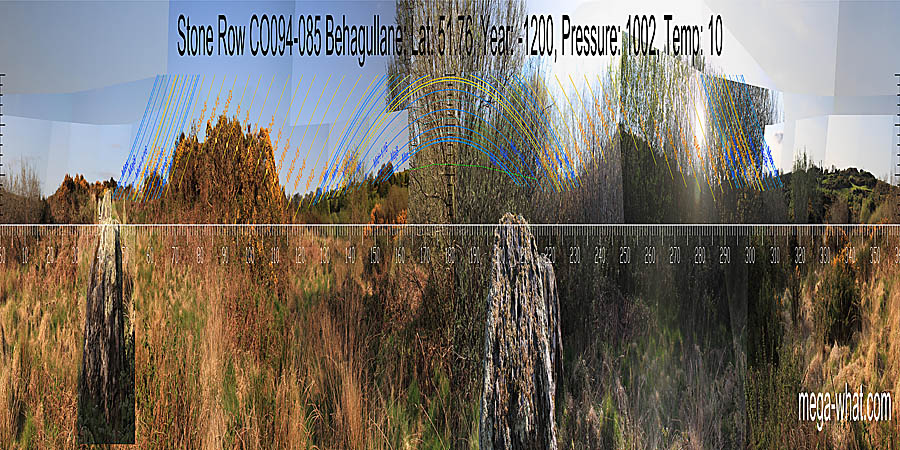 Behagullane Stone Row is about 6km north-east of Dunmanway. Two large stones are visible but there are two more broken stumps hidden in the grass to the north-east of them.
There is a Radial Stone Cairn c.16m to the south-east but I have not seen it as the area is swamped by vegetation.
Behagullane Stone Row is about 6km north-east of Dunmanway. Two large stones are visible but there are two more broken stumps hidden in the grass to the north-east of them.
There is a Radial Stone Cairn c.16m to the south-east but I have not seen it as the area is swamped by vegetation.
South is obscured but may be on a hilltop [Pic].
North is on the left slope of a dip [Pic].
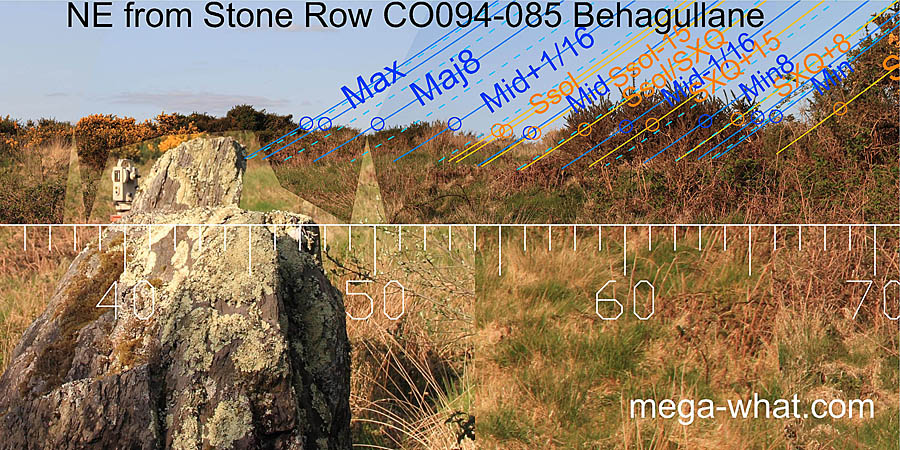 To the north-east is a very local low rise with the lunistice
Lunistices are the most northerly and southerly moons of the month. The lunar equivalent of solstices - more. zone on the slope of it.
Major standstillLunistice positions vary cyclically over an 18.6 year period but are fairly static for more than a year at either end of the range
is indicated by the row axis but exact observer position would be crucial at such a short distance.
To the north-east is a very local low rise with the lunistice
Lunistices are the most northerly and southerly moons of the month. The lunar equivalent of solstices - more. zone on the slope of it.
Major standstillLunistice positions vary cyclically over an 18.6 year period but are fairly static for more than a year at either end of the range
is indicated by the row axis but exact observer position would be crucial at such a short distance.
 Eastwards the profile of a nearby rocky knoll is largely obscured but the overall form is clear.
summer cross-quarters are at the northern foot and winter cross-quarter at the southern one with the midpoint in time between them on the top.
Eastwards the profile of a nearby rocky knoll is largely obscured but the overall form is clear.
summer cross-quarters are at the northern foot and winter cross-quarter at the southern one with the midpoint in time between them on the top.
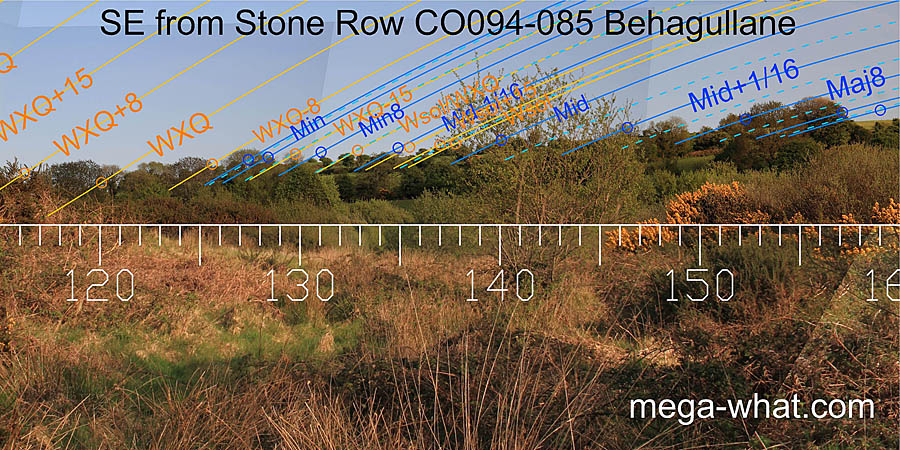 The south-eastern lunistice zone is on a more distant rising ridge. Winter cross-quarters are at the intersect with local ground.
The south-eastern lunistice zone is on a more distant rising ridge. Winter cross-quarters are at the intersect with local ground.
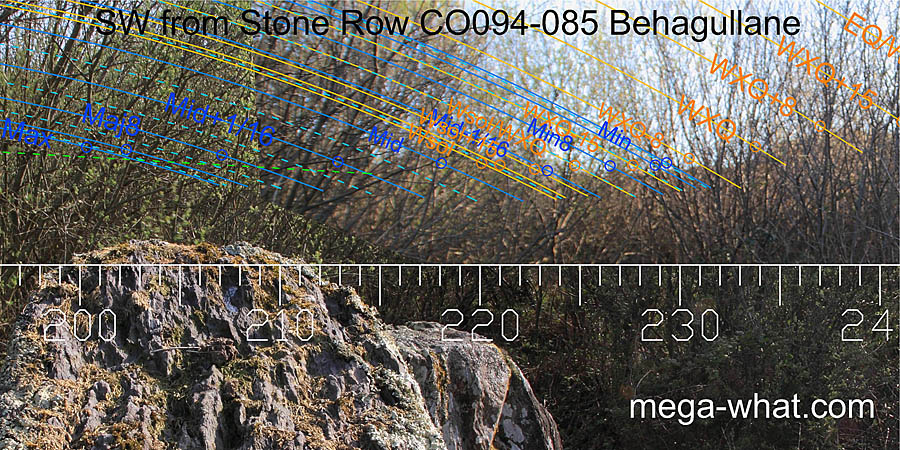 The south-western row axis seems to be more towards winter solstice but the skyline profile is uncertain.
Behind the trees, a fairly local horizon is disguised by more bushes but the lunistice zone appears to be spanning a dip, or the left slope of one.
The south-western row axis seems to be more towards winter solstice but the skyline profile is uncertain.
Behind the trees, a fairly local horizon is disguised by more bushes but the lunistice zone appears to be spanning a dip, or the left slope of one.
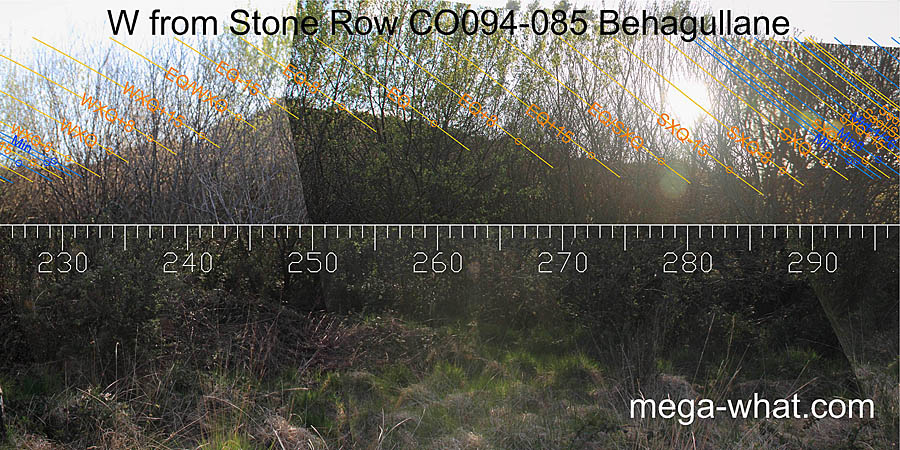 Westwards, another fairly local knoll is just visible through the trees but once again the accuracy is uncertain.
Westwards, another fairly local knoll is just visible through the trees but once again the accuracy is uncertain.
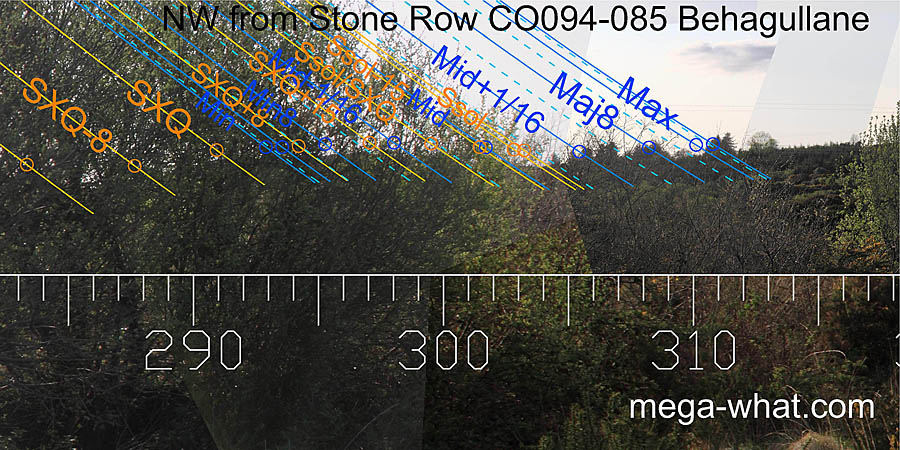 The north-western lunistice zone is on more distant ground, spanning a solstitial dip.
The north-western lunistice zone is on more distant ground, spanning a solstitial dip.
This site utilises more local horizons than any other I have investigated. Under such conditions, the exact placement of individual stones would be very significant.
- Farrannahineeny Stone Row is c.7.5km north-west (303°)
- Inchireagh Stone Circle is c.9km west (267°)
- Knockawaddra Stone Row is c.11km south (182°)
References
- Archaeological Survey of Ireland, record details. www.archaeology.ie/archaeological-survey-ireland
- POWER, D. et al. 1992 Archaeological Inventory of County Cork, Volume 1: West Cork. Dublin: Stationary Office. p34, no.139.
- Ó'NUALLÁIN, SEÁN 1988 Stone Rows in the South of Ireland. Proceedings of the Royal Irish Academy 88c:179-256, p246, no.117.
- RUGGLES, C.L.N. 1999 Astronomy in Prehistoric Britain and Ireland. Newhaven & London: Yale University Press. CKR67.
